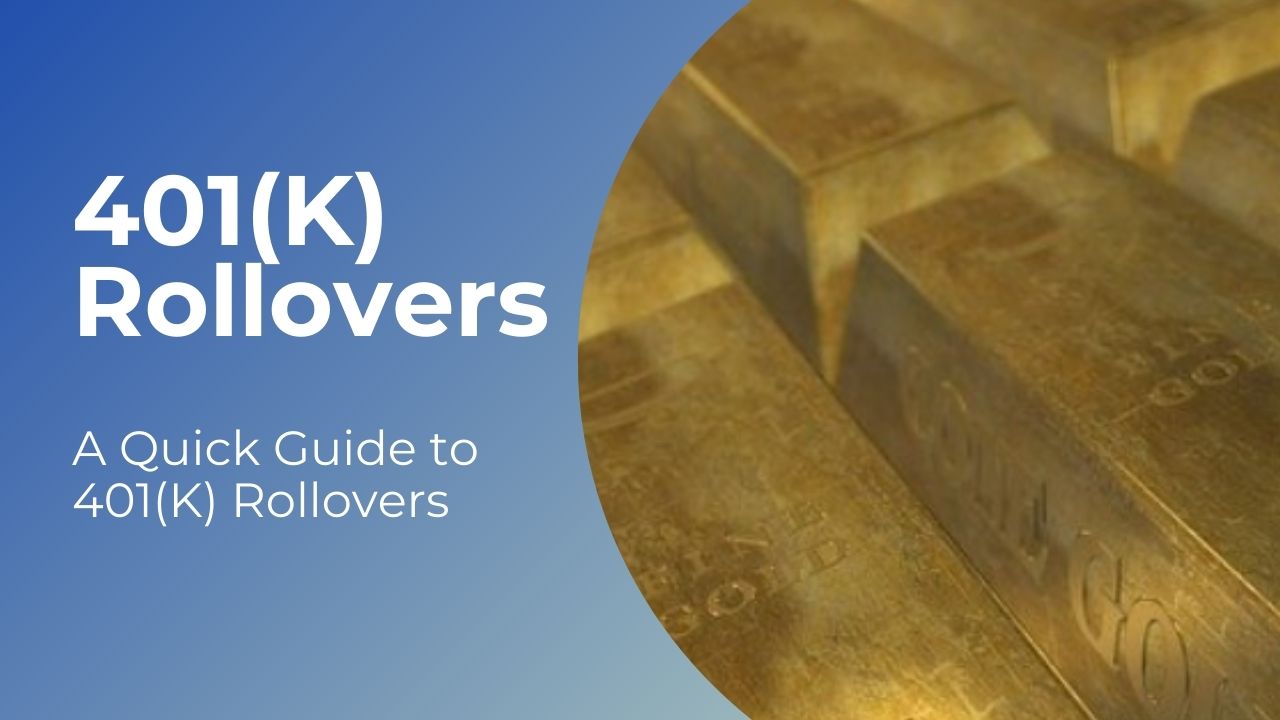A 401(K) rollover is transferring funds from one retirement plan to another. If you receive a distribution from your retirement plan, you are given a 60-day time limit to roll it over to an IRA or to a new plan, from the day the distribution is given to you.
This quick guide will tell you everything you need to know about rolling over your 401k plan including how it works, when to do it, and the advantages of rolling it over.
How Does a 401k Rollover Work?
If you choose to roll over your 401(K) plan, you have 4 options to choose from. Your plan administrator can help you decide which option is right for you. The four options that you have are:
- Leaving it the way it is
- Cashing the plan out
- Rolling it over in an IRA traditional and/or Roth IRA
- Transferring it to a new plan(if applicable)
The way the 401k to gold rollover works is by first deciding the type of account that you want. You have the option of transferring to your new employer’s retirement plan or moving your funds into an IRA. If you decide to create an IRA, you need to either open an IRA at a bank or through a brokerage firm. If you choose to roll your money over into a Roth IRA, you will need to roll it over to an IRA first and then you can transfer that to a Roth IRA.
After opening your account you will need to begin the rollover process by completing the necessary paperwork and funding your new account. You will need to get with your new plan administrator, bank, or brokerage firm to find out what is needed to complete the rollover process.
Before beginning the Rollover Gold IRA process, you can elect to have a direct rollover from your old account to your new account. This means that the funds will not touch your hands like they would in an indirect rollover and you will avoid a possible early distribution penalty and 20% tax withholding.
When is 401(K) Rollovers Necessary?
There are several reasons why an individual may elect to roll over their 401(K) plan. The most common reason is the termination of employment(voluntary or involuntary). However, some people will roll over their 401(K) plan when they are about to retire or when they want to consolidate their retirement plans instead of having multiple 401(K) accounts.
There are some people that will roll over their 401(K) into an IRA to take advantage of more investment options. IRAs do not have limitations on moving investments around and they are known to have lower fees.
Benefits of Rollovers
If you cash out your 401(K) you face taxes and penalties that can be avoided by rolling over your distribution. There are other benefits with 401(K) rollovers depending on the rollover option you select.
According to the IRS, distributions are taxable and subject to a mandatory 20% withholding if they are not rolled over into a new qualifying plan within 60 days from the date of distribution. In addition to this, if you are under the age of 59 � you will be taxed an extra 10% for early distributions.
If you keep your retirement assets in a plan with a former employer, you don’t have to do anything and you do not have to pay taxes until you withdraw the funds. If you transfer distributions into a new 401(K), you not only avoid tax penalties, your 401(K) contributions and assets are protected against creditors and you can borrow against your assets if you are ever in a financial bind. 401(K) rollovers to an IRA opens the door to a wider selection of investment options versus a 401(K) plan.
Bottom Line
After reading this guide, you should have a better understanding of how 401(K) rollovers work. The main thing to remember is that you have a 60-day window to decide on how you want to handle your distribution before it becomes taxable. If you are undecided on the rollover option that you want, you can always leave some of the funds in your previous account and transfer the remaining funds in a new 401(K) or IRA.



































